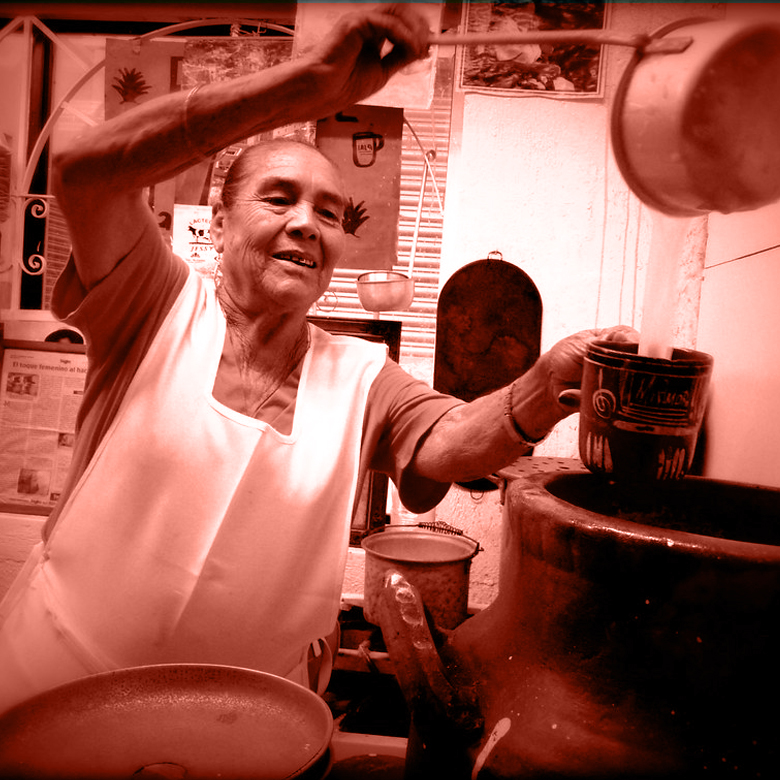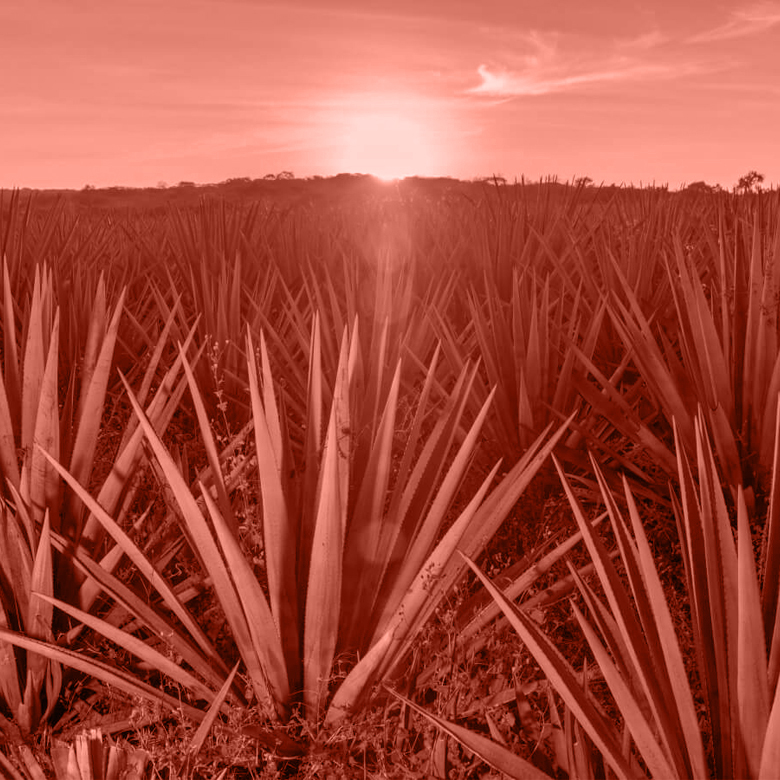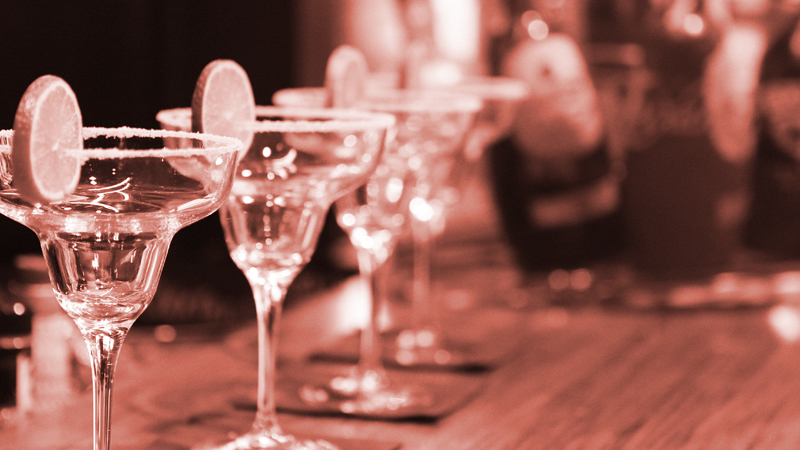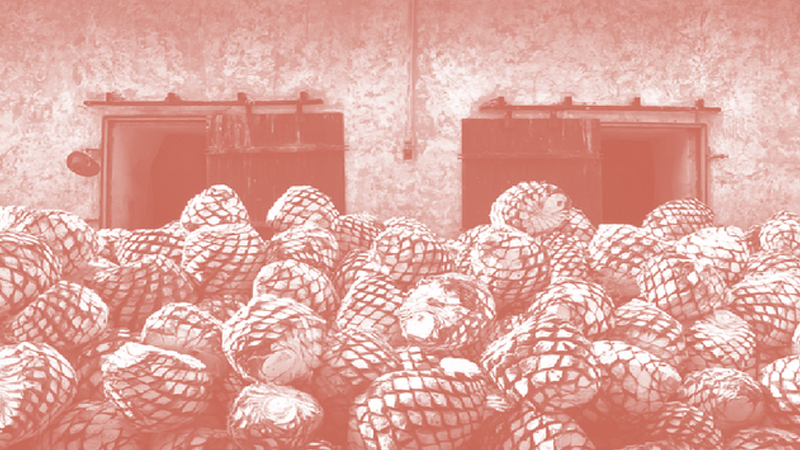White Tequila / Article
This is a freelance piece I wrote when I was a journalist living in Guadalajara.
Where white tequila is, today
At a crammed bar in La Condesa, Mexico City’s established cosmopolitan precinct of late-night excitement, sipping, and libido, waiters weave in inscrutable patterns among tables of cheerful, buttoned up customers. Warm dark woods give respite from the nipping December outside and against the back wall a kaleidoscopic regiment of bottles awaits the mirth that will bind it to these clients. Among these, tequila is chief; no fewer than fifteen diverse bottles jockey using their shapes and their complexions for the attentions of those gathered. The spectrum ranges from the murky amber tones of an extra añejo to the earthy coloration of the majority—reposados—to the brilliant clarity of a few blanco tequilas. They call to the adventurous and the familiar who line the bar and call for them in return, sirens all.

Such scenes, typical of that megalopolis theater, spread across Mexico and up, into the cocktail clubs and the multiplying tequila bars of the rest of North America. The spirit of this tequila is agave, splashing out to pepper the thirsty landscape with the full flushed acumen of techniques deeply interred in each bottle. White tequila—the purest, the oldest and (as we’ll see) the newest of the varieties—while to many the underdeveloped brother of richer, tinted tequila types, is anything but simpler. With new pedigrees to sate new markets, new white tequilas are even still sprouting from older styles—consequences of the way tequila has grown up over itself like an ancient city over half a millennium. Its history is anything but short, its character anything but crass, and its current whereabouts anything but clear.

Tequila has always been white
The history of tequila is for the most part the history of white tequila. Barrel-aged reposado and añejo varieties of the spirit didn’t occur to its distillers until the 19th century, but Native Mexicans had been fermenting the heart of the agave plant long before Spanish conquistadors set foot in the New World, though for the natives, the frothy yellow beverage obtained from this process was limited mostly to specific ritual uses. The Spanish conquerors by 1535 recognized the commercial potential of agave. Founder of Guadalajara Cristóbal de Oñate, in his first letter back to the Spanish crown, noted the natives obtaining sugar and a type of “wine” from the plant.
A version of their beverage, pulque, can be sampled today. One need only travel to a place like the Mercado Lazáro Cárdenas beside the grand basilica in Zapopan, Jalisco. Just past the slimy stench of the butcher’s stall with its dangling pig heads and the cluster of catch-all knickknack vendors, the Cardona family at Pulquería El Rinconcito has been selling their own tart, still-fermenting version of pulque out of large earthenware jugs for more than 25 years.
Many other such pulquerías still ply their singular interpretations of the drink all over central Mexico. Some are more viscous, some come with pack-in flavors (pineapple is a favorite), and some pack a wallop. With little regulation in the process, the recipe can deviate greatly from family to family. Among such variety, at least a few of these modern pulques would surely be recognizable to Spaniards like Oñate.

Although the conquerors were not content to leave this pulque as they had found it. They brought distillation to the process. Around 1600, Don Pedro Sánchez de Tagle established the first factory near what would become the city of Tequila for the production of agave spirit. These early distillates of agave were known for a few hundred years as “mezcal wine” or “mezcal wine of tequila.” Sánchez de Tagle didn’t happen upon mezcal wine success (and his later nickname, “The Father of Tequila”) by simple chance. Spain had banned vineyards in the New World in 1595 to protect its own wine export market. Thus, the mezcal wine of Sánchez de Tagle and others became a fast success, and eventually a properly taxed industry. With the opening of the port of San Blas on the Pacific coast over 150 years later, it gained its first export market in the missionaries in northwestern Mexico (modern California). By the late 19th century, producers were cooking blue weber agave in brick ovens to make a modern version of their spirit, finally called by its simple regional name: tequila.

The gringo factor
Americans are (in)famous for spring break. Do a kegstand. Shots! Chug! Puke! Get drunk enough and get lucky tonight! And in this vein, tequila has long been the ultimate test of grit. For folks who see the bar as a battlefield, to be won or lost on blood alcohol content, the phrase “tequila shots” rings like a drum march, calling to action a competitive temper for hamstrung irresponsibility, a few precious hours completely careless—manifested there on the bar, the cheap straw liquid with its fragrant nose ready to gag those foolish enough to inhale before drinking, the mouthful of salt and wedge of lime poised to prove the harshness of the experience, the sour face and the jeering of onlookers, cellmates in this mad dash to incoherence and utter isolation.
In years past, Americans enduring this rite of passage would simply outgrow Mexico’s pungent beverage, kicking back later with reminiscences proudly teeming with youth. “I used to drink tequila in college. Oh no, I can’t touch the stuff these days.” At best, Americans turned for their tequila fix to the margarita, a drink that basically drops déclassé bar shots into a festive, frozen glass.
For decades, even before Animal House and spring break lunacy, the margarita was the driving force behind tequila sales in the United States. There are several legends that attribute its origins to one bartender or another in the 1940s, but it’s likely to have been an invention of the Prohibition and a variant of the popular cocktail, the daisy. The daisy is a sour (citrus and sweetener) that can be mixed with a variety of liquors and often includes fruit flavor in addition to the lime. Modern versions use grenadine, whereas older varieties tended toward orange cordial.
It’s not a tremendous leap then, to imagine Americans sneaking across the border for a cheeky, legal drink and, when infused with tequila as the principal spirit, rechristening this cocktail “margarita”—Spanish for daisy.
Andy Seymour, New York-based mixology expert and co-founder of the spirits-education group “aka wine geek,” has poured his fair share of frosty lime-and-tequila concoctions. He explains its popularity.

“The margarita for years and years has been one of the top one or two cocktails in the U.S. Even in some bad forms it can still be a really enjoyable drink.”
Indeed, its balance of strong sensations is what has kept the margarita in vogue for so many years. Salt crusts to the rim of the glass, fresh squeezed limes add face-crumpling sour, and triple sec nearly brings it back into balance with a sweet orange cast. Finally, the whole thing is served nearly frozen. It takes a lot of alcohol to poke through that chorus, or an alcohol with a very strong profile, as the export market for tequila developed.
Thus, gag-worthy tequila has been keeping American bartenders happy for generations because they don’t have to use an inordinate amount of it in their margaritas. This tequila is usually “mixto” (51 percent blue agave and 49 percent cane or corn sugars) and developed to have that distinctively pungent nose. The good news for tequila companies is that it’s also cheap to produce.
Benjamín García Durán would agree. He has worked as a chemical engineer in the industry for more than 20 years, obtaining his tequila master title ten years ago in the rigorous and competitive environment at Jose Cuervo. He expounds patiently, “The margarita, practically speaking, was developed in the larger market of the United States, born out of the tastes that created the demand for that market. Such is the evolution of tequila. Suddenly, the consumer wants it [the new thing].” García has seen such demand first hand, moving on from Cuervo to develop Casa Dragones Tequila in the last decade. Casa Dragones aims to satisfy relatively new U.S. consumer demands, away from that passé margarita tequila.
From rags to delicious
Round about the time margaritas were becoming an entrenched symbol of the sleek getaway—strewn over hyper-color magazine advertisements exotic, leafy, and accessible in postwar goodtime America—more traditional forces were splintering off the next big direction for tequila. Julio González-Frausto Estrada was a parable of hard work and bootstrap achievement. He grew up poor in Jalisco, the main Mexican state of origin for tequila, and dropped out of school to work in the agave fields to help his family. In 1942, at the age of 17, he opened his own limited-production distillery and spent the next forty years building his brand, Tres Magueyes, into a recognized industry name.
His was an era that still saw the spirit as a means to an end, an undemanding way for the cantina folk to forget their plights. The Mexican elite passed around a preference for brandy and other imported liquors, and the export market was by this time dominated by strong margarita tequila. González-Frausto wasn’t the first to aspire to something classier. Certainly many tequila producers kept finer stock for family and friends, and a few had even tried selling the stuff to little success. Perhaps because of his own humble origins, though, he had a true palette for the beverage—given more to tasting tequila than to actually drinking it. So, on González-Frausto’s 60th birthday celebration in 1985, his sons and future son-in-law surprised him with his own select tequila bearing his name, Don Julio.
It so happens that they struck on the rise. In 1984, Mexico’s domestic tequila market was outsold by the export market for the first time. A few years later, Don Julio became the first successful attempt at a luxury tequila for a wider market. Of course, competitors were quick to launch their own premium labels and slowly, the world got used to a new image of tequila, crafted for proud display in fine liquor cabinets.
Almost all of this upmarket tequila, though, has been reposado or añejo—aged in oak barrels for varying lengths of time to mellow the tequila and impart body and flavor. These high-class tequilas have their profiles balanced by this aging process in order to be sipped straight, and they have dominated the premium end of the market. In 2006 the Tequila Regulatory Council (CRT) even introduced a new, ultra-luxury category: extra añejo, aged for a minimum of three years. All the movement, it seemed, was toward a darker, fuller-flavored beverage.

An emerging market
Meanwhile, in the trendy nightspots of New York, where indietronic music melts styles from bygone eras over black barstools, Victorian revivalist wallpaper, and layers of colored lights, bartenders are also looking way back for inspiration. Here, young professionals with disposable income weaned on reruns of Sex in the City will pay premium prices to avoid the predictability of mom’s Bloody Mary.
The revival of the cocktail, according to mixology expert Seymour, began with the American culinary movement of the 1980s, when people finally started to get bored of meat, potatoes, and the drinks that went along with them. He has seen the changes from the sage side of the bar. “In 1990 when I started, it was Jose Cuervo and Sauza and that’s all,” he remembers. Back then, the average client was less concerned with flavor balance and designation of origin. “The growth of the cocktail in general has created people who are a lot more interested, and much more curious, and much more seeking out of information about spirits and where they come from and how to get to the good ones,” he says.
What does this mean for white tequila? In this context, a star bartender needs to invent, and while gin and vodka had done well for creative mixing, traditional white tequila, with its strong margarita profile, simply wouldn’t play well with others.
That is, until this generation of urbanites. In recent years, the demand for premium white tequila has sparked a brand-new market. Seymour lauds these agave-based spirits as “some of the most mixable out there,” adding that he has seen them used recently in a lot of savory, herb-laced cocktails and riffs on stirred-style classics like the Old Fashioned and the Negroni. “The biggest trend,” he emphasizes, “is still the move off of the margarita.” He adds that people tend still to think of tequila as a white liquor and are also drinking a lot of it in shots, though more and more they are doing so without the dreadful lime-and-salt chaser.
None of these fashions have escaped notice of the market, but the machinery of the business world and the demands of distribution make innovation a necessary part of any flexible market response. The ways in which distilleries can achieve this more mixable, more easily sipped white tequila must fit into the myriad of different production methods and workflows they already practice.

Filter
Older distilleries have had their processes in place for years, processes which yield large volumes of margarita tequila. Reformulating from scratch would be expensive and time consuming, not to mention that changing the process at the distillery level could complicate the still-dominant market for the old-style tequila.
Several distilleries in this position have turned to filtering techniques to get their existing tequila down to a zero-zero profile—that is, a tequila with zero unpleasant taste and zero unpleasant smell. They might, for instance, employ some combination of activated carbon filters—to remove organic materials—and cellulose filters, which take out the non-soluble materials. It’s a balancing act though, because too much filtering can also take away too many of the good agave flavors, leaving a weak and uninteresting spirit. Some believe they have hit upon an equilibrium, and there are several tequilas with this pedigree.

Blendback
Some reviewed their existing lineup of tequilas and instead of hammering out the kinks in their white margarita tequila, looked toward the stock that could already be sipped gently: aged tequila. “This new white tequila didn’t come about by coincidence,” informs tequila master García. “It has always existed. It’s just that companies have made them now because the white tequila market was not growing.” He describes a market wherein demand is not the sole agent of change, where “Each company is just positioning itself in the market.” Thus, distilleries remain always on the lookout for untapped veins.
Unfortunately, añejo tequila is not white, it is straw to amber in color and also carries characteristics of the oak in which it spends at least one year. David Ruiz, independent tequila consultant, founder of tequilatours.com and expert in the field, explains how distilleries get from there to a white tequila in a process he has termed “blendback.” The aged tequila is run through filters (different from the aforementioned zero-zero filters) intended mostly to remove the particles that color tequila while leaving the flavor. The resulting beverage is usually then blended back into existing white tequila batches at a ratio that retains many of the characteristics of the aged sipping tequila. Joven tequilas have been made in a similar fashion for years sans the decolorizing filtration. These tequilas share some of the oak and spice characteristics of their regular, aged cousins, but less vividly, leaving room for lighter fruit flavors and a smooth, pleasant finish. These products, labeled as añejo blanco, añejo claro, diamond, crystal, or joven tequila, have been slowly carving out their own niche in the tequila landscape.
Triple distillation
The more anything is distilled, the more neutral the spirit—basically, the closer to vodka it becomes. A few distilleries, rather than modifying their entire process or applying special filtration to the end product, will simply distill the tequila once more. Usually dubbed “triple distillation,” this process is another stab at the balancing act, a gambit to remove some of the bad while retaining enough of the good. While it certainly takes finesse, there’s nothing too complex in this technique.
Casa Noble Tequila and Justin Timberlake’s 901 Tequila are two of several tequilas that actively promote triple distillation in their marketing campaigns.

From scratch
There are already a handful of artisanal and traditional tequila companies using premium processes to craft better tequila. By controlling the growth of the agave, trimming the heart down to a close shave, slow-cooking it for at least a day in stone ovens, fermenting the agave juice with the agave fiber in wooden vats, and batch-distilling in copper stills, they are already making a white tequila that comes out at a quality that’s ready for the premium market.
The catch? This process is labor-intensive, slow, and low capacity. The distilleries employing these techniques simply cannot meet the international demand for quality white tequila at competitive prices. 7 Leguas, Tapatio, and Villa Lobos are a few of the tequilas that use this method to arrive at their white tequilas.
Of course, just about every tequila brand romanticizes hundreds of years of pedigree, seriously mature agaves, the world’s most tender production processes, and fetishlike tequila lust. The poor consumer, if he’s not completely oblivious, is left to rely on reviews and pundits to peel off the hype.

For the cosmopolite in a glowing gastrobar, the judicious tequila connoisseur, or those just beginning to tap into the well of the tequila world to make its discoveries anew, the differences between these increasing varieties of white tequilas couldn’t be more important, or more pronounced.
Ruiz offers a simple way to differentiate them. Drink. “For those who are uninitiated, you can taste a smooth tequila, and if it has no real taste after the fact, no pleasantness to it, no finish to it, it’s that filtered type. If it has the pleasantness to it and a nice aftertaste and you can still feel attributes to it, then it’s going to be a blendback- or añejo-type tequila.”
Ruiz recommends a simple test anyone can run at any bar with a selection of tequilas. Ask for a straight shot of their well white tequila (the house tequila they use to make margaritas). Wait for the bartender’s skeptical looks and have him or her put it in a snifter, a short flute, or a tequila glass to open up the bouquet. Then, ask for a flight of four or five more white tequilas ranging on up the price chain. Obviously not all tequilas are valued according to quality, but in the absence of knowledge, price is taste. Line up all of these shots before you start with any of them. By this time, the bartender will probably catch on to your purpose and if you’re lucky, he or she will be able to guide your tasting odyssey.
“It’s not really to decide what’s a good and bad tequila,” says Ruiz. “It’s to actually train yourself to get to the point where you start to understand what you’re looking for.” Therefore, pay attention. Basic rules of wine or spirit tasting apply. Take a moment to observe the tequila in the glass—the thickness, the tears it leaves after swirling it around. When inhaling it, you’re not looking for the smell, you’re looking for the smells—all the fragments and invocations embedded in the profile of that brand. Finally, take a sip and hold it on your tongue for three to five seconds. If you’re serious about your task, spit it out. Of course, that might take the fun out of the experience for many people, so swallowing is an equally viable option. Just do so knowing that after about two drinks, your sensory perception will start to change, affecting the rest of your tasting.
Another thing you can do to experiment is to take a shot of your favorite tequila (or a tequila that is perceived to be good), put few drops of pure water into it and swirl it around. Then, try it. This should dilute the alcohol a little bit while maintaining the flavors. Then add a little more water and see what that does too.
If that’s not enough science, you can also pour yourself a shot before bed. Go ahead and smell it, try to get a good sense of its profile. Then, let it sit overnight. Take it easy on the coffee and other strong flavors in the morning. Then, check the glass. If the tequila profile has evaporated from the glass and left a bland spirit, there wasn’t much to that tequila to begin with, but if the glass still smells—even with a white tequila—in the bottom there will be a coating. That’s the good stuff. It should still retain the aromas that the tequila master etched into the brand—at least until it evaporates completely.
Through such training and experimentation, it’s possible to see through the hype and prices without spending years in the industry. It should become easy to spot tequilas marketed beyond their class when tasted against others in their price category, for instance.
“The key is having the information on what you’re actually looking for—that you know that this is a blendback or this is a white añejo, or this is a hundred percent sipping tequila type and if you start to understand that, you can start to sort it all out,” Ruiz concludes.

“These are beverages of change,” explains tequila master García. “The person and company that wants to launch an innovative product always looks for something the people have not tried. Older people always want the same thing and the young are going to want change.”
“A lot of tequila producers don’t want to change or adapt new ways,” he adds. “But the evolution of tequila is the evolution of technology.” In his eyes, there’s nothing wrong with new techniques, and nothing sacred about old ones just because they are old. “It’s impossible to continue certain inefficient processes. For example, there are those who used to use ten or eleven kilograms of agave for every liter of tequila. Now, it’s half that, because of technology.” In García’s time, companies have tested innovations—such as agave cloning in the early ‘90s—that have failed, and others—such as upmarket tequila—that have stuck.
No one in the industry—producer, consultant, or mixologist—talks of tequila in static terms. The gamblers’ promise of windfall discoveries awaits them all. There are flavored tequila infusions, extra añejos, premixed margaritas, and the cocktail, still riding an upswing. Large and small producers eagerly court new markets, some with bravado, and others, like cheating spouses. After decades of contentment with the most basic of the varieties, they have turned their attentions and skills on it, letting in an enthusiastic fresh breeze for white tequila. Lucky consumers will join them to take it as far as they are all willing to go, wherever that might be.